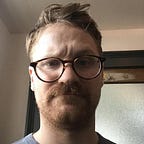Spooky at a Distance and the Motherboard Ghosts
Fifth Solvay Conference, Brussels. 1927.
Two guys walk into a bar. Tell me if you’ve heard this one before. One is Albert Einstein; the other is Niels Bohr. And I suppose it’s not so much a bar as it is the Fifth Solvay Conference on Physics in Brussels. The year is 1927 and they’re arguing over quantum entanglement.
Quantum Entanglement
Quantum Entanglement is a gut punch for cause and effect. It’s the idea that when something happens to one particle in a field, it happens to all particles simultaneously. I should clarify. It’s not that when an event happens to a specific particle it then happens to all the other particles. It’s a notion that when an action or property is placed on one unit, it will immediately be inherited by its counter-units. As you can imagine, this idea was problematic for Einstein. Its existence would imply that something was faster than light, for starters. But beyond that, it breaks down the fundamentals of causality.
So, these guys are sitting at the bar, arguing. Bohr believes the quantum world is composed of these little entanglements. Einstein is skeptical. He goes so far as to call these phenomena “spooky at a distance.” For the duration of the conference Bohr and Einstein go back and forth in heated debates. Each evening Einstein would trapse away muttering, mulling over the conversations of the evening. In the morning he would have more questions for Niels. By the evening Niels would have suitable answers and so the cycle would go.
Broken Metaphor
This analogy may be slightly broken but I want to try and break it down in terms of computer science. It might be best to think of Quantum Entanglement dependencies and their subatomic particles as sets of data that are undefined until a query is ran on them. Here’s where it gets funky: imagine that the query is executed on multiple unknown databases and generating the exact same results from both databases, again and again and again. Now imagine that the database, when not being queried, is (actually) empty.
This is what Bohr and Einstein were dealing with in 1927. Today computer scientists and physicists are still dealing with it.
How Can We Make Use of This?
Qubits are the measurements by which quantum computing is composed. Quantum computing depends on entanglement and superposition to execute any computation. This is a massive topic but one I want to focus on, briefly.
The implications of computing algorithms when time/ space limitations are a nonfactor are immense. The difference between quantum computing and this year’s latest memory card and processor are immense — it’s like comparing charcoal and piece of paper to an iPad. Imagine computing when there’s no need for iteration, or massive databases for that matter. Storage and the speed at which calculations can be made when there’s no need for an if/ else if language to store data is absurd. I’m not even sure it’s the same discipline.
